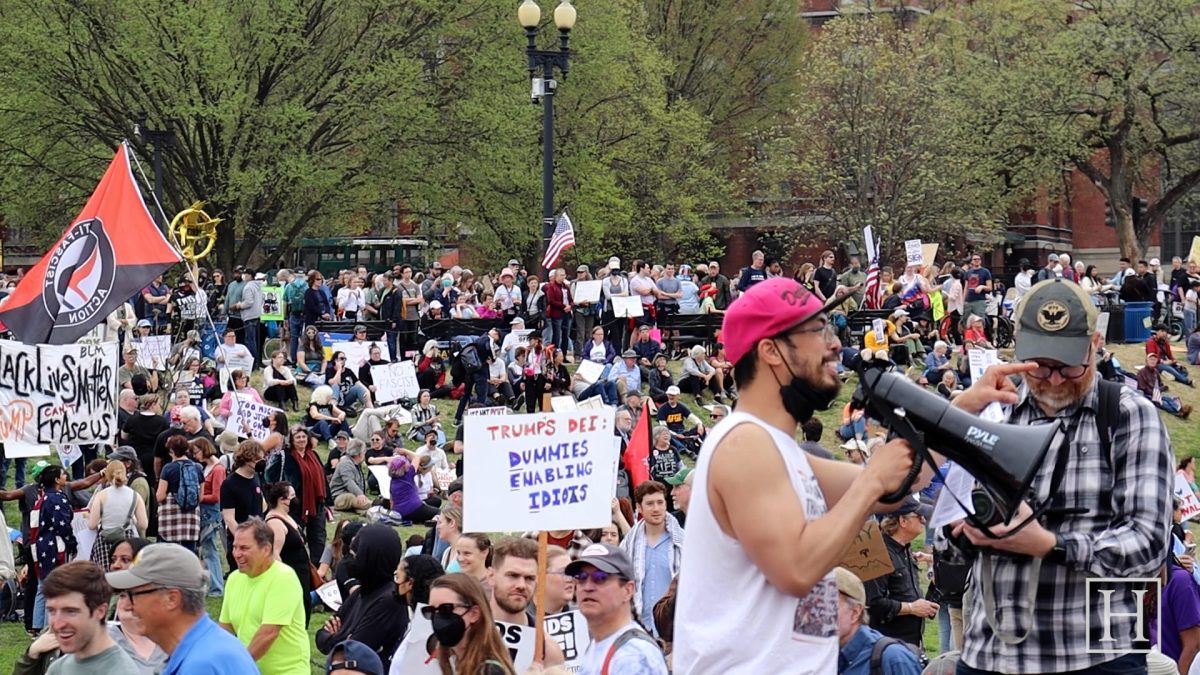Before GW had taken over Foggy Bottom, this area was the center of Washington’s German community, known at the time as Little Hamburg. There was even a beer brauerei where the Kennedy Center is.
In the 18th century, a Swiss speculator bought up plots of land in what is now Foggy Bottom. The area soon became a magnet for German immigrants, who founded the United Church in 1833 at the corner of 20th and G streets.
“This was a German church in a German neighborhood,” said Bodo Schwabe, Pastor for the German-speaking services at the United Church.
But overtime, the German population became increasingly integrated and Little Hamburg lost its Teutonic identity. Now all that’s left of the once-flourishing community is the church, a dwindling congregation of mostly elderly Germans.
Schwabe gave me a history of the church that included pictures from a memorial service held when the German President died in 1934. The pictures show a German military official leaving the service via the front steps, walking onto G Street in a Nazi uniform.
The congregation grew with the multiple waves of German immigration to the United States, the last of which came in the years after the Second World War, explained Schwabe. Those immigrants – now in their seventies and eighties – form the backbone of the church’s aging membership. And many carry dark memories of growing up in the Third Reich.
“It keeps coming up,” Schwabe said. “They were not the generation that was responsible for what happened.”
But they still carry the guilt of association. He said the church provides them a place where they can talk about their “traumatic experiences” in a way they can’t with outsiders.
Church member Waltraut Fornasa was born in 1933, the same year Hitler came to power. As a little girl, she watched as Nazi troops came through her grandmother’s village shooting anyone who had dared surrender to the approaching Russians.
“We went by a house where an older man lived. I knew him well. He had always picked up milk from my grandmother every day. He had the white flag outside, and the [troops] had made him stand against the wall and had shot him. We saw this,” Fornasa told me over dinner in her Northwest D.C. home.
“[They] wanted to fight until the last day, and these men had surrendered,” said Fornasa. “I can still remember it today, how he just slouched there, with his head hanging to the right.”
Over sixty years has passed, yet Fornasa is still haunted by her memory.
“I go three times a week to water aerobics, and there is a moment where we do exercises on the side of the pool. Every time the instructor barks, ‘Get to the wall,’ I think of that man.”
Schwabe said that many of many of the church’s members carry similar memories with them.
“It’s important to them that they feel they can talk about their experiences with someone who understands,” explained Schwabe, who remembers when American tanks rolled into his town.
Fornasa confessed she shares the German burden too, “With Jews I am still reserved, and I still have a guilty feeling, as a German.”
Pastor Schwabe said that unless something unforeseen happens, the church might not exist in a few years. He is working on merging with a larger German congregation, but the plan relies on GW allowing the church to use its parking facilities.
If the church disappears, it won’t just be the individual stories that are lost. But also a piece of Foggy Bottom’s history.
Seems like a worthy cause to me – let’s give them a place to park.




